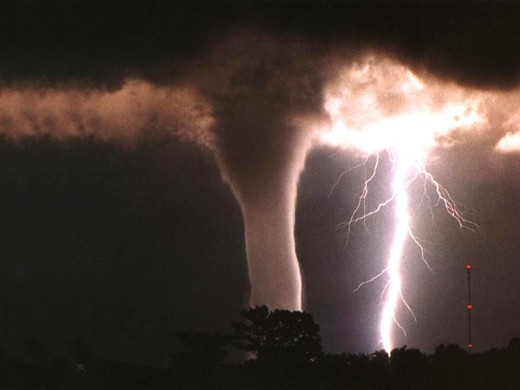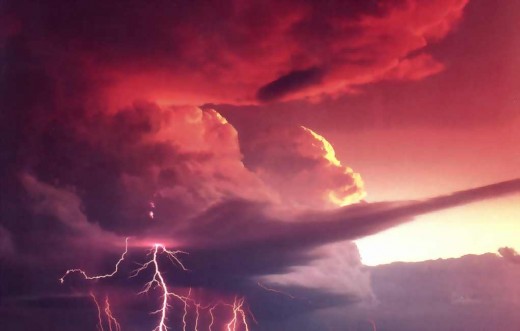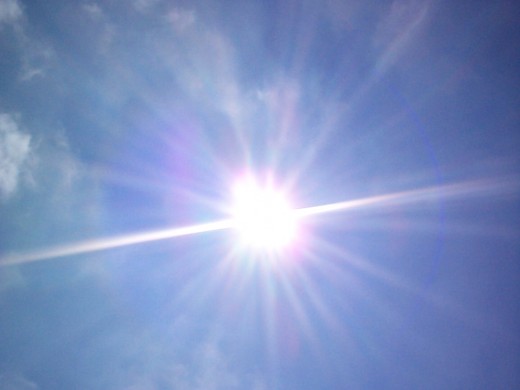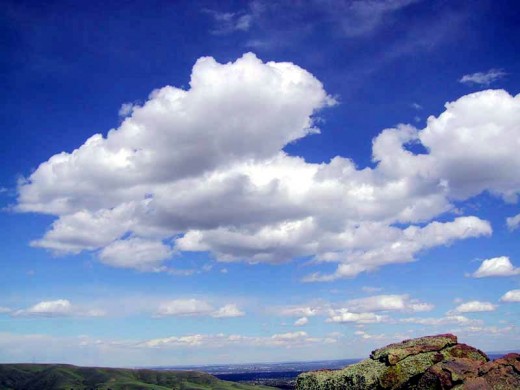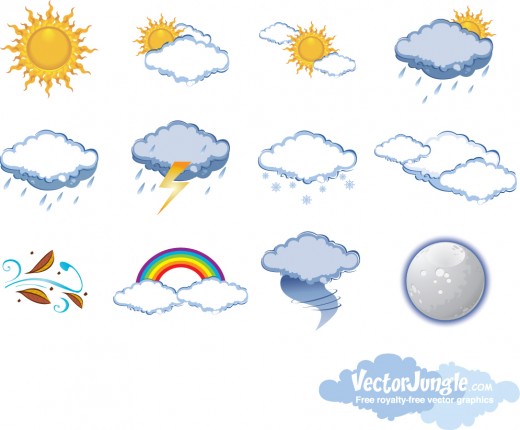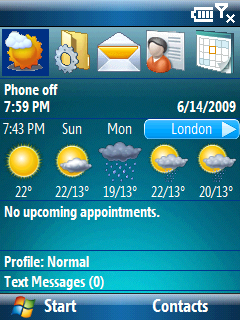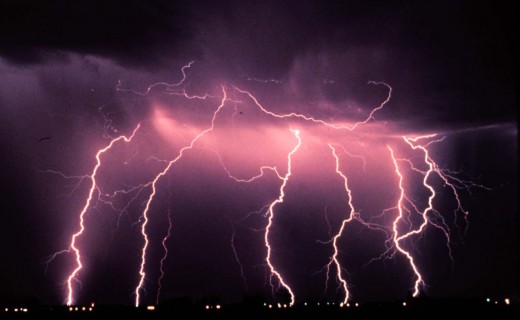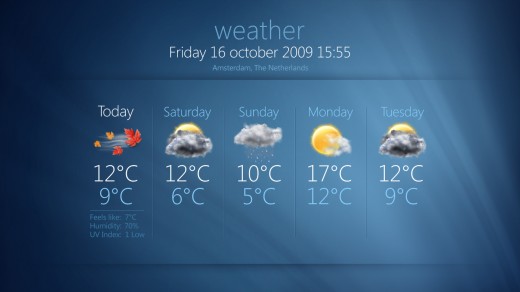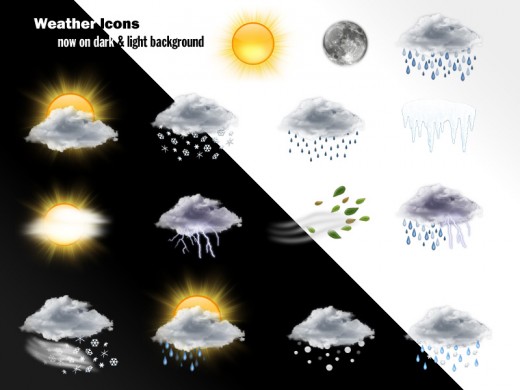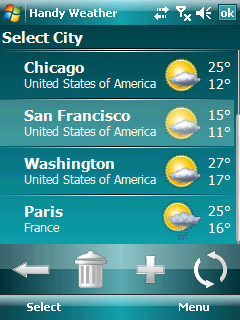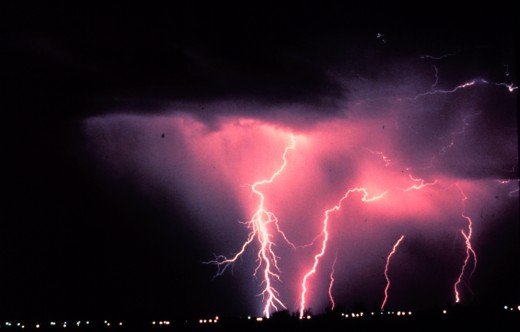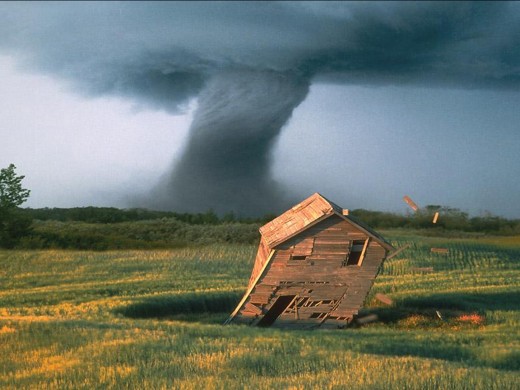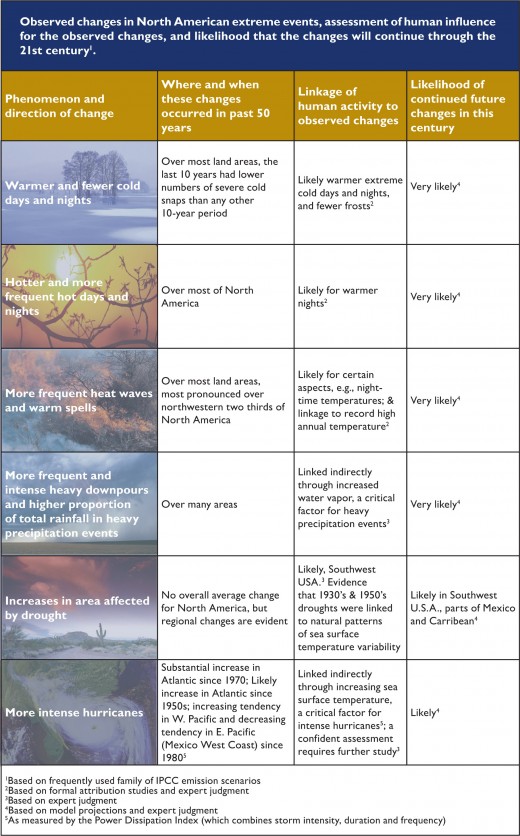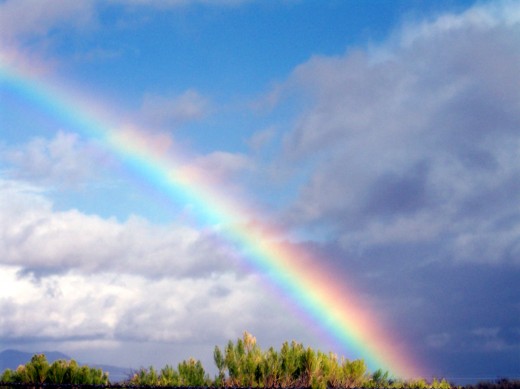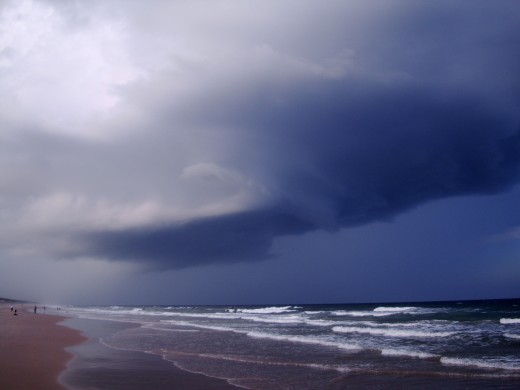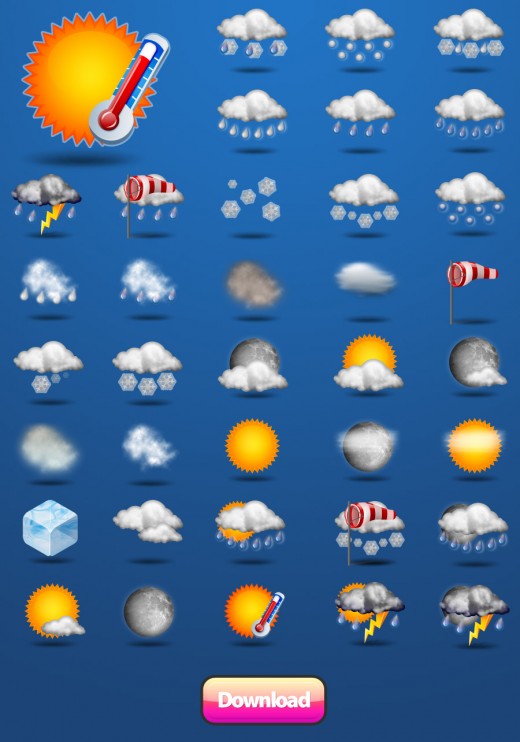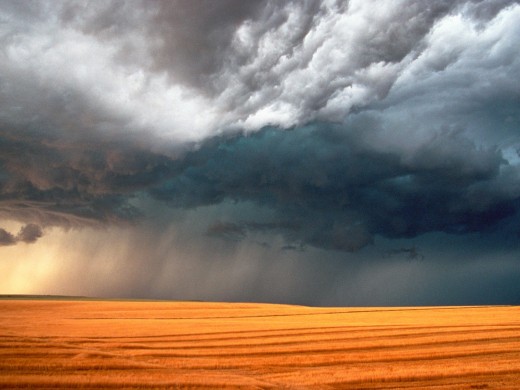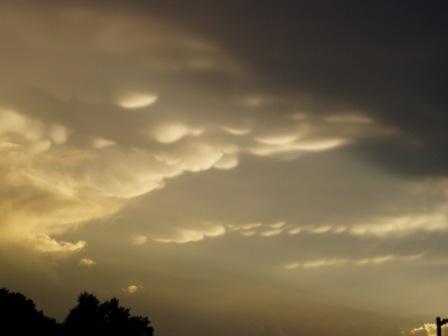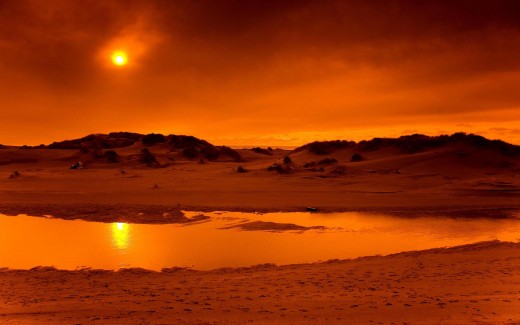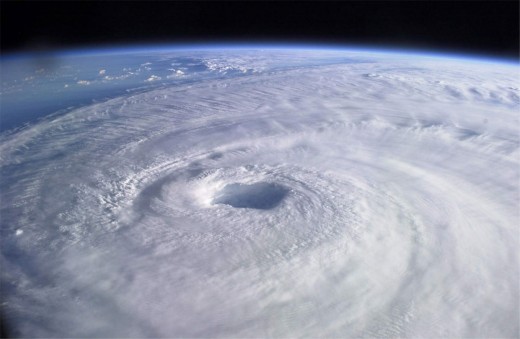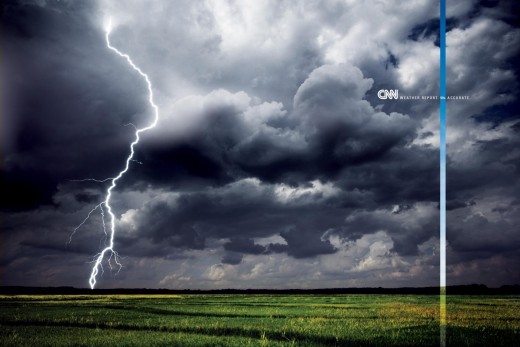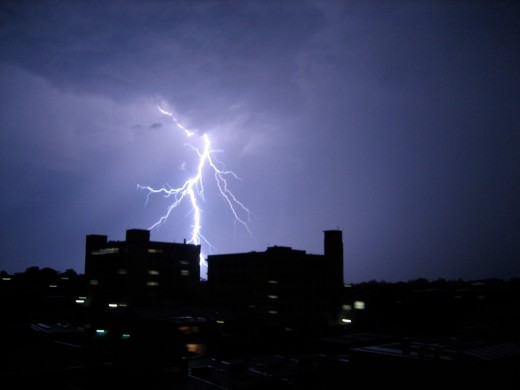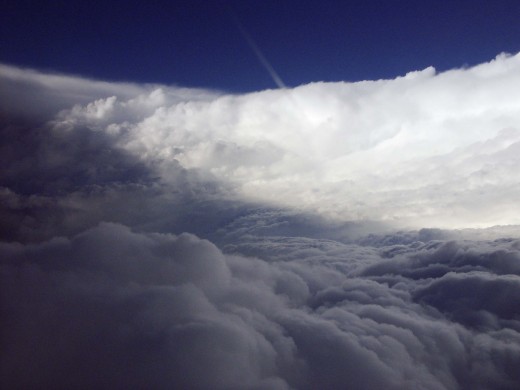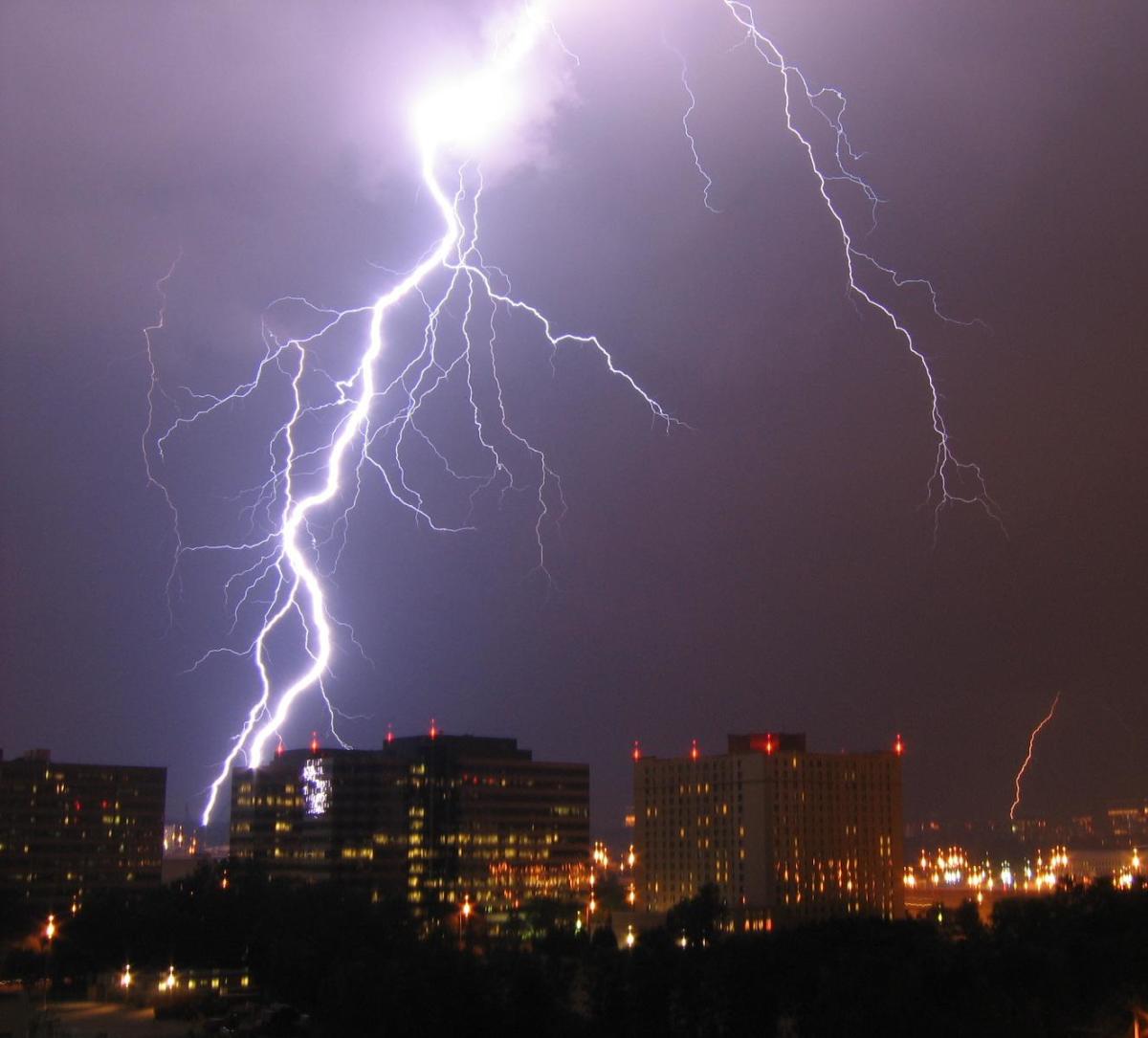- HubPages»
- Books, Literature, and Writing»
- Commercial & Creative Writing»
- Creative Writing»
- Humor Writing
Save Yourself from Extreme Weather Events! Learn How to Detect and Predict Approaching Weather.
Mark Twain once said "Everybody talks about the weather but nobody does anything about it," a line he came up with while waiting for a bus in a rainstorm without an umbrella, or so the story goes, which may be apocryphal since they probably didn't have buses in the time of Twain, so maybe it was a choo-choo-twain, and not a bus.
In any event, weather is our topic and more specifically, 'how to forecast the weather' is the subject under discussion. Forecasting the weather is something I do with little accuracy, but I won't let that stop me.
(Ed.Note: the word Mr Marx used above, 'apocryphal' may not be familiar to all our readers. It comes from a Latin word, which the Romans stole from Plato who in turn found it under a rock in Athens. Or so the story goes. It may be apocryphal.)
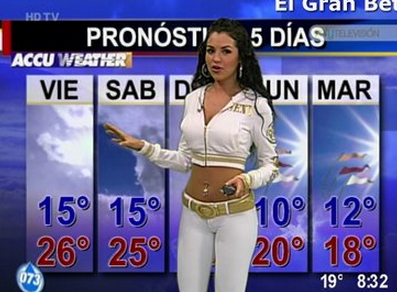
Weather Definitions
Before we begin we must first clarify a few technical terms of a weather-like nature:
- jet stream--a stream of air which scampers around in the stratosphere causing mischief. The jet stream is said to be responsible for such things as snow in August and Nancy Pelosi's hairdo.
- high-pressure fronts: these are caused by having too many barometers in your house which can also cause your nose to bleed, your fish to fly, and your dog to yodel.
- precipitation: this is what occurs prior to the 'cipitation'.
- Celsius: the temperature as measured by Canadians. We like to make things complicated.
- Farhenheit: the temperature as measured by the Fahrenheit Scale--invented by Albertus Fahrenheit who originally called it The Booyah Scale which he found more fun to say. "And the temperature in Washington, D.C. today will be 44 Degrees--BOOYAH!"
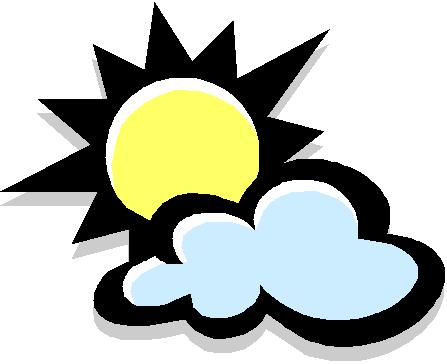
10 Ways to Predict the Weather Yourself
So, having got the boring definitions out of the way, let us move on to the more interesting part , 'how to forecast the weather by yourself'.
If you can learn to forecast the weather you will be the talk of the town, and people will tip their hats to you as you pass them; ladies will want to give you a big kiss for saving them from getting their hair wet during last month's unexpected typhoon, and babies will reach out their little arms and scream 'Dada-Dada!' when you walk by. (In which case you may want to avoid the babies.)
1.Watch the Animals
Is your python perky or pouty ? Is your birdy bouncy or bummed out? Is your kitty cavorting or is she just sitting watching General Hospital all day? Believe it or not, animals often know when it's going to rain, and a change in their behaviour will often signify it, so keep your eyes open.
2. Feel the Grass
Upon waking in the morning, jump out of bed and run outside to your front lawn. If you don't have one, use the neighboor's lawn. Get down on all fours and feel the grass. If it is wet with 'dew' then you not only are in for a nice day, rain-free, but you now have wet pajama-pants. This is the price we weather-forecasters must pay for our predictions. Can't be helped, unless of course you want to go outside with no pants--not something I would advise, but you be the judge.
3. Inhale Deeply
Go to the nearest swamp, and take a deep breath. Do you detect swamp gas? Well then, it could be pouring rain before you can say 'God that smells horrid!' You can also do this in a forested areas, or a meadow full of daisies and daffodils. If you smell an earthy compost-like flavour to the air, then the same conclusion holds.
4. Is there a Rainbow in the Sky?
That's nice. I love rainbows. It is said that at the end of every rainbow is a pot of gold, guarded by a grouchy, greedy leprechaun. On the other hand, Science says rainbows are simply moisture particles, trapped in the air after a rainstorm--particles which like to form a beautiful colourful arch in the sky, for no reason at all. I prefer to believe the Leprchaun story, as it is more plausible.
If you spot a rainbow in the east, a clear day is likely, but if it is in the west, the opposite is true. If it appears in your livingroom you need to call a plumber.
5. Which Direction is the Wind Blowing?
This is a method you may have seen golfers use. Take your index finger and without poking yourself in the eye, place it in your mouth. Transfer your saliva or as scientists call it 'spit' onto the your finger, and remove your finger (from your mouth, not your hand.)
Is your finger wet? Good. You now have a spitty finger. Raise your arm straight up, as far as it will go, and extend your index finger such that any passing breeze will dry it. If it dries fast, within a second, you should run for cover as this signifies a tornado is approaching. If it dries slow, then you are in for nice weather with no major changes.
6. Start a Fire
I don't recommend this method unless you have a large, open space and lots of dry wood, as well as some marshmallows and weenies to roast, or course. Simply build a fire, and watch the smoke rise. If it goes straight up you are in luck.(no change in weather) If it goes down, and curls around your toes and up your nose, you are standing too close to the flames.
7. Curly hair
Some people are walking weather-predictors in that their hair tends to curl when there is high humidity. So keep a close eye on women with short, easily-curled hair, and if they suddenly start to look like they are growing an 'Afro' then you are in for a rainfall. Another way to check for sky-rocketing humidity, is wooden objects--if your bathroom door suddenly decides, as mine does, that it will not close, but instead prefers to keep popping open (usually at the most inconvenient times) then you should expect rain.
8. Cirrously! Look at the Clouds.
Clouds, apart from being fun to look at and see funny faces in them, like a cloud that looks like your granny saying the word 'fricassee', are also handy for seeing into the weather pattern. Cirrus clouds indicate a long-term trend towards bad weather, and sinking Mammatus clouds (yes there really IS such a cloud) shows you the storm is going bye-bye.
9. Moon
'The moon is not in affected by weather, so what does it have to do with our weather?' (you ask. you smarty-pants). Well, I will tell you. The moon shines through our atmosphere, and the 'interference' it causes as it's light disturbs the earth's atmosphere is what we perceive and what we perceive can be interpreted in specific ways. Now isn't that a solid, scientific answer? I don't know how I pulled it off. Don't expect me to do it again. So, as per weather prediction, the kind of rings around the moon can tell us about what's happening up there in the sky where all weather is concocted by the nature-gods, or whoever does it. So look for a clear,sharp moon, and you can be ready for some rain.
10. Poems to Predict-By
Sailors need to have a good grasp of weather events, if they expect to stay afloat, so they have made up a little poem which every schoolboy knows and every schoolgirl knew it before the boys (if anything is certain, that is!). "Red sky at night is a sailor's delight." This is the first part of the ditty and it simply reveals the unshakable truth that it will be a clear day tomorrow and the sailors can stay up late and party or pirate or do whatever they like as they won't have to get up early and 'batten down the hatches' for an approaching storm. The other part of this poem goes 'Red sky in morning, sailors take warning." This means that if the sailors wake up with hangovers from the red sky the previous night, they will be sorry for it, as now the tables have switched on them, and it is going to storm afer all.
Conclusion? Sailors are not good poets.
Extreme Weather Wallpaper Gallery
Click thumbnail to view full-size





























Initialization
Numerical weather prediction uses current weather conditions as input into mathematical models of the atmosphere and oceans to predict the weather and future sea state. Use of model ensemble forecasts helps to define the forecast uncertainty and extend weather forecasting farther into the future than would otherwise be possible. Operational numerical weather prediction in the United States began in 1955 under the Joint Numerical Weather Prediction Unit (JNWPU), a joint project by the "The origins of computer weather prediction and climate modeling".
Weather forecasting
% Weather forecasting is the application of science and technology to predict the state of the atmosphere for a future time and a given location. Human beings have attempted to predict the weather informally for millennia, and formally since at least the nineteenth century. The use of sky cover in weather prediction has led to various weather lore over the centuries. Astrology Lessons, History, Prediction, Skeptics, and Astrology Compatibility.
History
Weather forecasting is the application of science and technology to predict the state of the atmosphere for a future time and a given location. Human beings have attempted to predict the weather informally for millennia, and formally since at least the nineteenth century. The use of sky cover in weather prediction has led to various weather lore over the centuries. Astrology Lessons, History, Prediction, Skeptics, and Astrology Compatibility.

